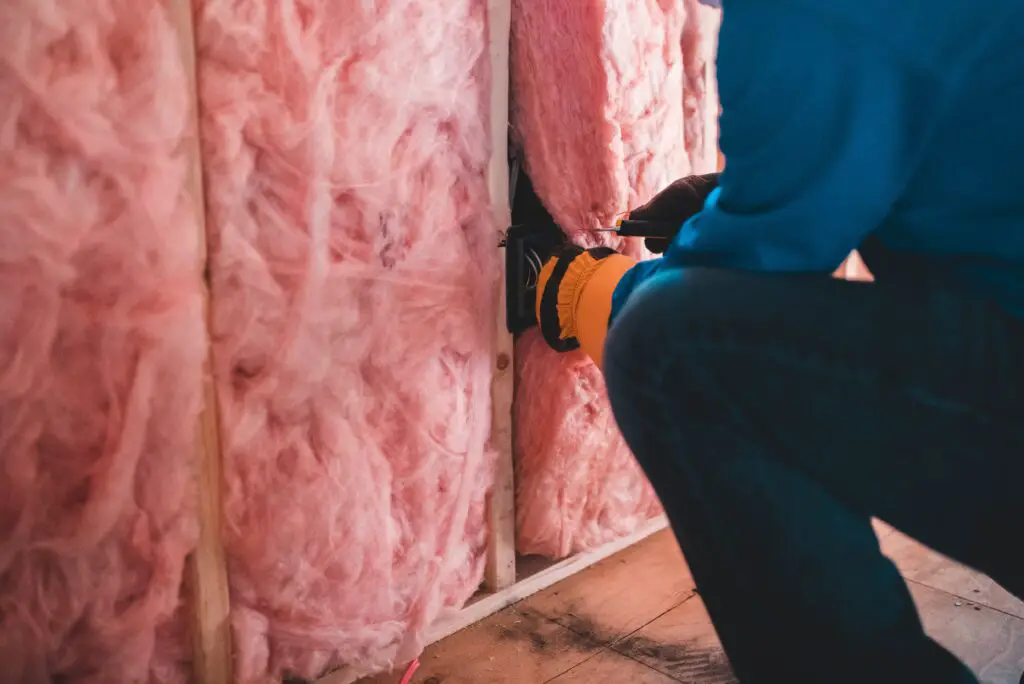As the temperatures start to drop, many basement homeowners are thinking about how they’re going to keep their homes warm. For some, this means increasing the thermostat and hoping for the best. For others, who have homes with basements, there’s another option: insulation for basements.
What is insulation?
Insulation is a material that helps to keep heat or cold out of space. It can be used in the form of walls, ceilings, and floors. It is usually made from materials like fiberglass, foam, or cellulose.
Types of insulation for basement
Basement insulation can be divided into two types:
- Blown-in insulation
- Fiberglass batts
Blown-in insulation
Blown-in insulation is made of recycled newspapers and other materials that are compressed and injected into the wall cavities, blown-in insulation is typically cheaper than fiberglass batt insulation, but it does not last as long.
Fiberglass batt insulation
Fiberglass batt insulation is a type of thermal insulation made of glass or fiberglass strands that are woven together. Fiberglass batt insulation is more expensive up front, but it lasts longer and does not require regular maintenance.
In addition, if the basement is used for storage, a layer of blown-in insulation may be adequate, but if the basement is used for living space, a layer of fiberglass batt insulation will provide better heat retention and noise reduction.
How to choose the right insulation for basements
There are a few things to keep in mind when choosing insulation for basements, including climate, insulation type, and cost.
Climate is the most important factor when choosing insulation for basements. If you live in a warm climate, you will need more insulation than someone living in a cold climate. The R-value of the insulation will tell you how much heat it can block. The higher the R-value, the more efficient the insulation will be at blocking heat.
Insulation type is also important when choosing a product for your basement. Cellulose insulation is good for warm climates because it does not retain moisture and does not require sealing. Polyurethane foam is good for cold climates because it retains heat and does not emit moisture. However, it is less efficient at blocking heat than cellulose insulation.
Cost is also an important factor to consider when purchasing insulation for basements. Insulation can be expensive, but it’s worth it to keep your home warm and energy-efficient.
The best insulation for basements
There are a few different types of insulation that can be used in basements. The most popular type of insulation is fiberglass insulation. Fiberglass insulation is very energy-efficient and it also helps to keep the basement cool in the summer and warm in the winter. Another type of insulation that can be used in basements is foam insulation. Foam insulation is not as energy-efficient as fiberglass insulation, but it does tend to be less expensive. Cellulose insulation is also an option for basements. Cellulose insulation is made from recycled paper products and it is a good choice for those who want to reduce their carbon footprint.
Benefits of insulation for basements
Basements are typically colder in the winter and hotter in the summer, making them difficult to comfortable in. Insulation for basements can make a huge difference in how a basement feels during different seasons. In the winter, insulation can help keep the basement at a comfortable temperature all day. In the summer, when it is hot outside, insulation can help keep the basement cool.
There are other benefits to insulating a basement as well. Insulation can improve air quality in a basement, reducing the amount of dust and allergens that accumulate. It also helps reduce noise levels in a basement, making it more peaceful and less distracting. If you are considering insulating your basement, there are many options available to you. consult with an expert to find the best insulation for your needs.
Costs of insulation for basements
Insulation for basements can be a cost-effective way to keep your home warm in the winter and cool in the summer. However, choosing the right insulation can be a challenge. Here are some factors to consider:
1. Insulation type: Fiberglass, cellulose, mineral wool or spray foam insulation is all effective at keeping heat inside a home. However, each type has different costs and benefits.
2. Size of the insulation: The more insulation you use, the less heat will escape through the walls and ceiling. However, more insulation also means more material to install and care for.
3. Location of the insulation: The best insulations work best in specific locations. For example, fiberglass works well as an air barrier between the inside and outside environment, but it’s not effective as a thermal insulator against cold weather.
4. Cost of installation: Insulation installation can be expensive, especially if you have to hire a professional contractor. You may also need to make structural changes to your home in order to install it properly.

When it comes to insulating your basement, there are a few things you need to keep in mind. First and foremost, make sure the insulation is certified to meet government standards. Second, be sure the insulation is able to withstand the weather conditions in your area. Third, be sure that the insulation is installed properly so that it can do its job effectively. Fourth, make sure you have an adequate ventilation system in place so that moisture doesn’t build up and damage your insulation. Finally, consider adding heat mitigation measures such as thermal break windows or underfloor heating if you live in a cold climate.

